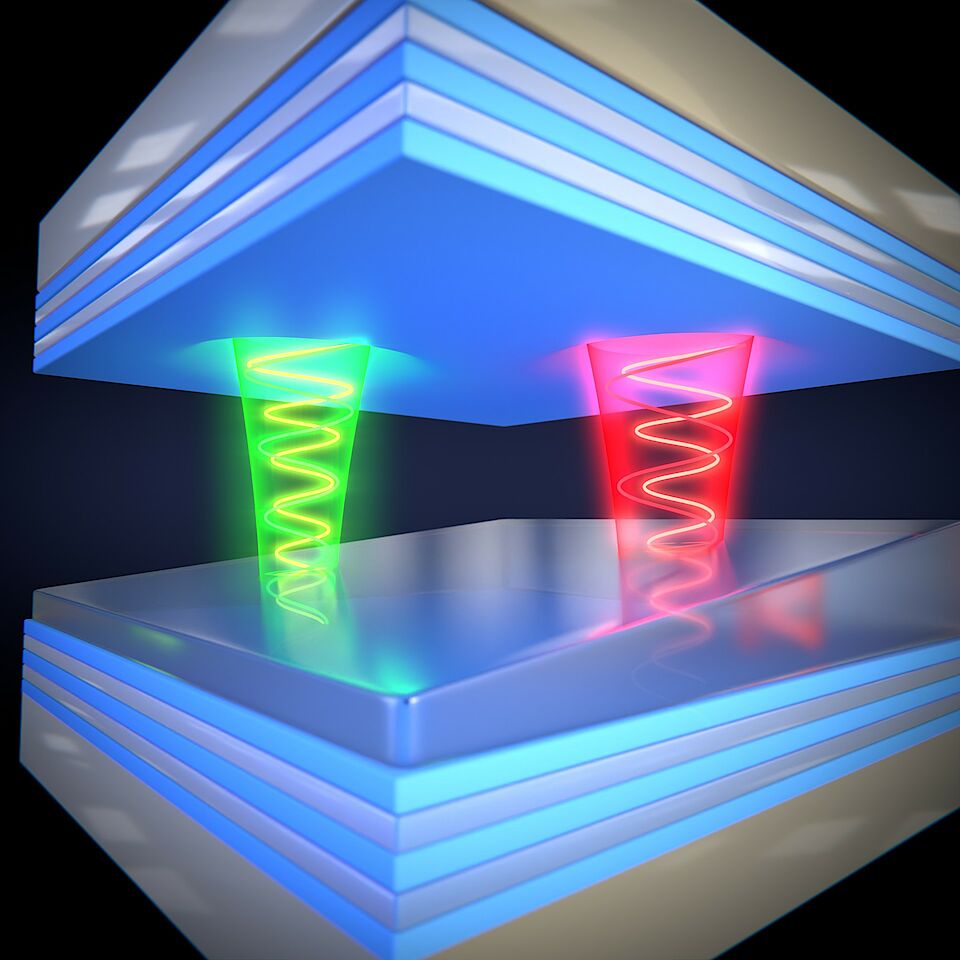/ News, Research
Laser light of any wavelength
Researchers from the SNI network have developed a platform for the resonant enhancement for so-called nonlinear optical processes which could aid to produce laser light of any wavelength. They combine a wedge-shaped diamond membrane with two narrowly spaced, highly reflective mirrors (Fabry-Perot microcavity). In this way, the researchers can regulate the resonant frequencies of the microcavity, and thus the wavelengths involved in the nonlinear optical process, by the distance between the mirrors and by the thickness of the diamond membrane. In the scientific journal “Optica”, the team of scientists from Stanford, Calgary and Basel report that their approach can be applied to other material systems and nonlinear processes and could thus pave the way to a universal frequency shifter for laser light.
Researchers worldwide are working on developing new ways to generate laser emission at arbitrary wavelengths. Solid-state lasers are the leading platform because of their compact design, reliability, stable output and beam quality. In most designs, an electric semiconductor diode laser serves either as a direct radiation source or as a pump source to generate laser radiation in other materials. However, various wavelength ranges exist that cannot be generated with such semiconductor lasers.
Nonlinear optical processes can be used to overcome this limitation, as they allow the wavelength of a laser to be converted to another color. However, these nonlinear processes are inherently weak and high-power pump lasers are required to overcome the laser threshold. Several optical fields with different colors are involved in these nonlinear processes. The intensity of these fields can be significantly increased by confining the light to a small volume in an optical resonator, thereby significantly reducing the power requirement.
Wedge-shaped diamond membrane
In an optical resonator, the light is amplified at certain frequencies – similar to sound waves in an organ pipe. Dr. Daniel Riedel (Stanford University) and Dr. Sigurd Flågan (University of Calgary) have now developed a novel platform to amplify two optical fields. The platform is based on a Fabry-Perot microcavity – two closely spaced, highly reflective mirrors into which they integrate a thin diamond membrane with a wedge-shaped thickness profile.
The platform demonstrates an elegant way to control the resonant frequencies of two optical fields with two independent set screws: the mirror spacing and the diamond thickness. Both can be controlled by vertical and lateral displacements of the two mirrors using nanopositioners – the wedge-shaped surface profile translates the lateral displacement into a change in diamond thickness.
“The platform paves the way for a universal, low-threshold frequency shifter for laser light that could enable the implementation of cost-effective solutions for lasers in “exotic” wavelength ranges. Our approach can be transferred to other nonlinear processes and material platforms, enabling many more potential applications,” Daniel Riedel and Sigurd Flågan summarize. The two scientists were PhD students in the groups of Professor Dr. Patrick Maletinsky and Professor Dr. Richard Warburton and carried out this work during their time in Basel at the Department of Physics.
Original paper:
Sigurd Flågan, Patrick Maletinsky, Richard J. Warburton, and Daniel Riedel, “Microcavity platform for widely tunable optical double resonance,” Optica 9, 1197-1209 (2022).
https://doi.org/10.1364/OPTICA.466003

